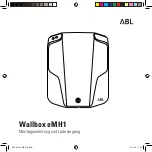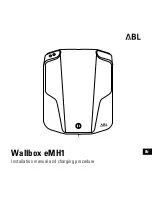
I01�High-voltage�Components
6.�Charging�the�High-voltage�Battery
113
6.2.6.�Power�electronics�in�the�(EME)
The�power�electronics�for�the�conversion�of�the�AC�voltage�coming�from�the�charging�socket�to�direct
current�voltage�required�for�charging�the�high-voltage�battery�is�housed�in�the�electrical�machine
electronics.�The�AC�voltage�is�fed�to�the�electrical�machine�electronics�via�a�single-phase�supply.�The
input�voltage,�which�can�be�processed�by�the�electrical�machine�electronics,�may�be�in�the�following
range:�100 V�to�240 V,�50 Hz�or�60 Hz.
The�power�electronics�module�is�a�unidirectional�AC/DC�converter,�i.e.�a�rectifier.
At�the�output,�which�is�separated�galvanically�from�the�input,�the�electrical�machine�electronics
supplies�an�electronically�adjustable�direct�current�voltage�or�an�electronically�adjustable�direct�current
flows.�The�specifications�for�the�output�voltage�and�the�output�current�come�from�the�function�"High-
voltage�power�management"�in�the�EME�control�unit.�The�values�are�calculated�and�adjusted�by�the
EME�so�that�the�high-voltage�battery�is�optimally�charged�and�the�other�consumers�in�the�I01�are
supplied�with�sufficient�electrical�energy.
The�EME�is�designed�so�it�can�provide�a�maximum�electrical�power�of�3.7 kW�on�the�output
side.�This�is�charging�configuration�is�used�(in�the�US�market)�only�when�charging�with�the
occasional�use�cable�via�a�household�120V�socket.�And�it�sufficient�to�fully�charge�the�I01
high-voltage�battery�under�optimal�marginal�conditions�in�about�16�hours.
6.3.�AC�charging�with�7.4 kW
AC�charging�with�7.4 kW�is�standard�equipment�for�the�US�market�(SA�4U8�AC�Fast�Charging)�and�it
is�possible�via�a�permanently�installed�AC�charging�station�(wallbox).�In�order�to�deliver�the�charging
power�of�7.4 kW,�the�AC�charging�station�must�provide�32�A�at�a�phase�connection.�P�=�U�x�I�=�230 V�x
32 A�=�7360 W�=�7.4 kW.
















































